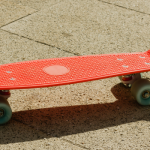Skateboarding has been around for decades and has become a popular sport among people of all ages. Many people enjoy the rush of adrenaline that comes with riding a skateboard, while others see it as an efficient means of transportation.
However, a common question among skateboarders and non-skateboarders alike is whether skateboarding can lead to one leg becoming noticeably bigger than the other.
In this article, we will explore the truth behind this popular belief and delve into the potential impact of skateboarding on one’s leg size.
We will also discuss ways to maintain balanced muscle development while engaging in this thrilling sport. So, put on your helmet and let’s dive into the world of skateboarding.
The Myth: Does Skateboarding Create Muscle Imbalances?
One of the main reasons why people believe that skateboarding can make one leg bigger than the other is due to the repetitive nature of the sport.
When riding a skateboard, one foot remains in constant contact with the board while the other is used to push off the ground. This constant pushing motion can lead people to believe that it will cause one leg to become significantly larger than the other over time.
However, this belief is largely a myth. While it may seem like one leg is doing more work than the other, skateboarding actually engages both legs in a balanced manner.
In fact, studies have shown that skateboarding requires symmetrical muscle usage in both legs to maintain balance and control while riding. This means that skateboarding is not likely to cause significant muscle imbalances between the legs.
The Reality: Skateboarding’s Impact on Leg Size
Although skateboarding may not create noticeable differences in leg size, it does have an impact on the muscles used in this sport. While pushing with one leg may not lead to disproportionate muscle development, it does engage the muscles in that leg more intensely. This can result in more defined and toned muscles over time.
In particular, skateboarding heavily targets the quadriceps, hamstrings, and calves in both legs. These muscles are responsible for maintaining balance and control while riding a skateboard. As a result, regular skateboarding can lead to stronger and more defined leg muscles overall.
Maintaining Balanced Muscle Development
To prevent any potential muscle imbalances while skateboarding, it is important to incorporate exercises that target both legs equally. This will help maintain balanced muscle development and ensure that one leg does not become noticeably larger or stronger than the other.
Some recommended tips includes as follows:
Symmetrical Strength Training:
Achieving balanced muscle development is foundational for overall fitness and well-being.
Symmetrical strength training is a key component of this pursuit. Exercises like squats, deadlifts, and bench presses engage both sides of the body equally, preventing one side from becoming disproportionately stronger.
This approach fosters symmetry in muscle growth, reducing the risk of imbalances that can affect posture and performance.
By consistently incorporating bilateral movements into your workout routine, you promote overall strength and maintain a harmonious physique.
Unilateral Exercises:
To address and correct potential muscle imbalances, integrating unilateral exercises is crucial.
Movements like lunges, single-leg squats, and one-arm dumbbell rows focus on one side of the body at a time, promoting equal strength and stability.
These exercises not only help identify existing imbalances but also contribute to a more symmetrical and functionally balanced physique.
By incorporating unilateral exercises, you ensure that both sides of your body receive targeted attention, reducing the likelihood of developing disparities in muscle strength and size.
Focus on Core Stability:
A strong and stable core is the cornerstone of balanced muscle development. Core stability exercises, including planks, Russian twists, and leg raises, contribute to overall symmetry and functional strength.
The core muscles play a vital role in stabilizing the spine and facilitating the transfer of force between the upper and lower body.
Prioritizing core strength enhances your ability to maintain proper form during exercises, reducing the risk of compensatory movements that can lead to muscle imbalances.
Incorporate core-specific exercises into your routine to fortify the foundation of your physique and promote balanced muscular development.
Mindful Muscle Engagement:
Mindful muscle engagement is a fundamental aspect of achieving and maintaining balanced muscle development.
Being aware of how each muscle group contributes to a particular movement helps prevent compensatory actions that may lead to imbalances.
Focus on proper form and technique during exercises, ensuring that both sides of your body actively participate. This conscious approach to muscle engagement fosters balanced growth over time.
By avoiding overreliance on stronger muscles, you encourage the development of weaker areas, leading to a more proportionate and aesthetically pleasing physique.
Regularly assess and adjust your workout routine to ensure a mindful and balanced approach to muscle engagement.
Regular Flexibility and Mobility Work:
Balanced muscle development goes hand in hand with flexibility and mobility. Incorporating regular stretching and mobility exercises into your routine is essential for preventing muscle tightness and promoting a full range of motion.
Target areas prone to tightness, such as the hips, hamstrings, and shoulders, to ensure optimal flexibility.
Improved flexibility enables muscles to work through their complete range, reducing the risk of imbalances caused by restricted movement.
Including dynamic stretches and mobility drills in your warm-up and cool-down routines enhances joint health and muscular flexibility.
By prioritizing flexibility and mobility, you support overall symmetry in muscle development, contributing to better performance and reduced injury risk.
Conclusion
While skateboarding can lead to muscle development and potential leg size differences, the extent of these effects varies among individuals.
Factors such as riding style, frequency, and conscious efforts to balance muscle engagement play significant roles.
As with any physical activity, maintaining a well-rounded fitness routine that includes cross-training and flexibility exercises can mitigate the risk of imbalances.
Lastly, awareness and intentional training can help skateboarders enjoy the sport while minimizing the likelihood of significant leg asymmetry.
![Why do skateboarders hate scooters? [Reasons + Tips] Why do skateboarders hate scooters? [Reasons + Tips]](https://bedoper.site/wp-content/uploads/2023/04/Why-do-skateboarders-hate-scooters-150x150.png)


![How fast do skateboards go downhill? [90 mph (145 km/h)] How fast do skateboards go downhill? [90 mph (145 km/h)]](https://bedoper.site/wp-content/uploads/2023/04/How-fast-do-skateboards-go-downhill-150x150.png)
